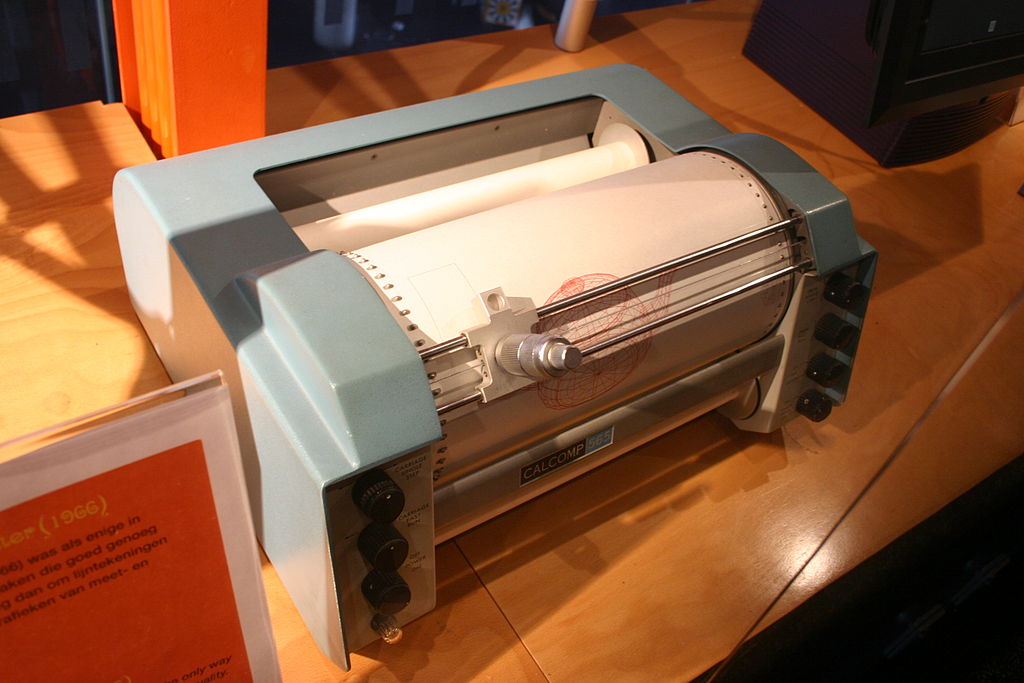
- #Peter luget plotter drawing 1965 programming movie
- #Peter luget plotter drawing 1965 programming software
#Peter luget plotter drawing 1965 programming movie
Outside Walgett Jim Spigelman trained his home movie camera on the hostile convoy of cars which followed the bus out of town at night and ran it off the road. They not only challenged these practices, but they ensured that reports of their demonstrations and local townspeople's hostile responses were available for news broadcasts on radio and television. The students demonstrated against racial discrimination practised at the Walgett Returned Services League, the Moree Baths, the Kempsey Baths and the Boraville picture theatre. They were frequently refused service in shops and refused drinks in hotels. In the towns Aboriginal people were routinely barred from clubs, swimming pools and cafes. Students were shocked at the living conditions which Aboriginal people endured outside the towns. The Freedom Ride, as it came to be called, included visits to Walgett, Gulargambone, Kempsey, Bowraville and Moree.

Police and locals confront the students at Moree This led to the planning of a fact-finding trip to western New South Wales towns so students could see for themselves the conditions of life for Aboriginal people. In 1964 a University of Sydney protest against racial segregation in the United States had brought comments from members of the public urging students to look to their own backyard if they wanted to draw attention to racial discrimination. The group included Ann Curthoys who would later write a history of these events, Jim Spigelman who would later become Chief Justice of the Supreme Court of New South Wales and Darce Cassidy, an arts student who was also a part-time reporter for the ABC. The students had formed into a body called Student Action for Aborigines (SAFA) in 1964 to plan this trip and ensure media coverage.Ĭharles Perkins, an Arrernte and Kalkadoon man born in Alice Springs, who was a third year arts student at the university, was elected president of SAFA. And they also wished to encourage and support Aboriginal people themselves to resist discrimination. They hoped to point out and help to lessen the socially discriminatory barriers which existed between Aboriginal and white residents. The students planned to draw public attention to the poor state of Aboriginal health, education and housing. In February 1965 a group of University of Sydney students organised a bus tour of western and coastal New South Wales towns.
#Peter luget plotter drawing 1965 programming software
This timeline continues through the 1980’s, with a focus on the software and hardware that was developed for the home market from late 1970's to the 1990's.Student Action for Aborigines bus at Boggabilla

I am interested in how the larger corporate, and often Military Funded laboratories, effected the dawn of the personal computer and the introduction of the personal computer to the home. This visual timeline starts by tracing the paint systems, frame buffers, and graphic user interfaces created out of these labs, with a focus on the first paint/draw software and the various drawing tools. The artistic collaborations that grew out of these labs fueled the advent of Computer Graphics, Computer Art and Video Art from the 1960's to the 1990's. If we look at the software that has become commonplace today (such as adobe photoshop), which allows for painting, animation and photo manipulation in one, we can trace the roots of this software to the University and Corporate Labs that housed large computers with advanced capabilities for their time - MIT Lincoln Labs & Radiation Labs, DARPA & the Augmented Research Centre (ARC), Bell Labs, NYIT’s Computer Graphics Lab, Xerox Palo Alto Research Centre (Xerox PARC), NASA’s Jet Propulsion Labs (JPL). This timeline is the result of researching the origins of digital paint and draw software, and the tools that were developed to allow for hand manipulation (versus plotter drawn) drawing and painting - the mouse, light pen & drawing tablet.


 0 kommentar(er)
0 kommentar(er)
